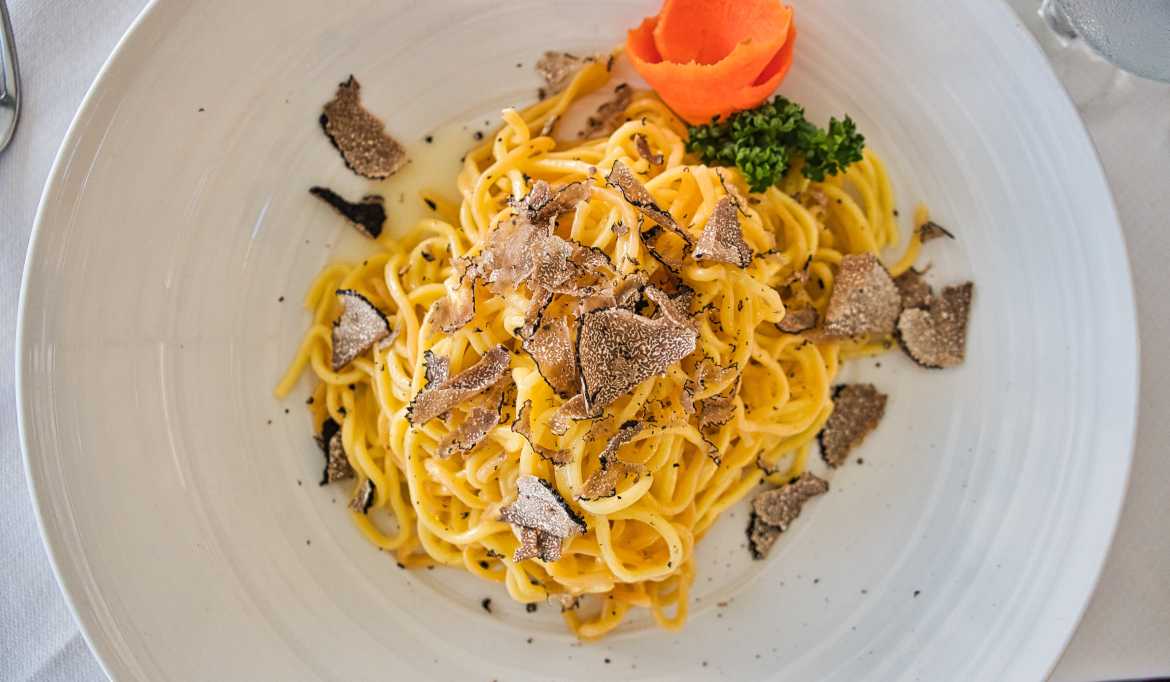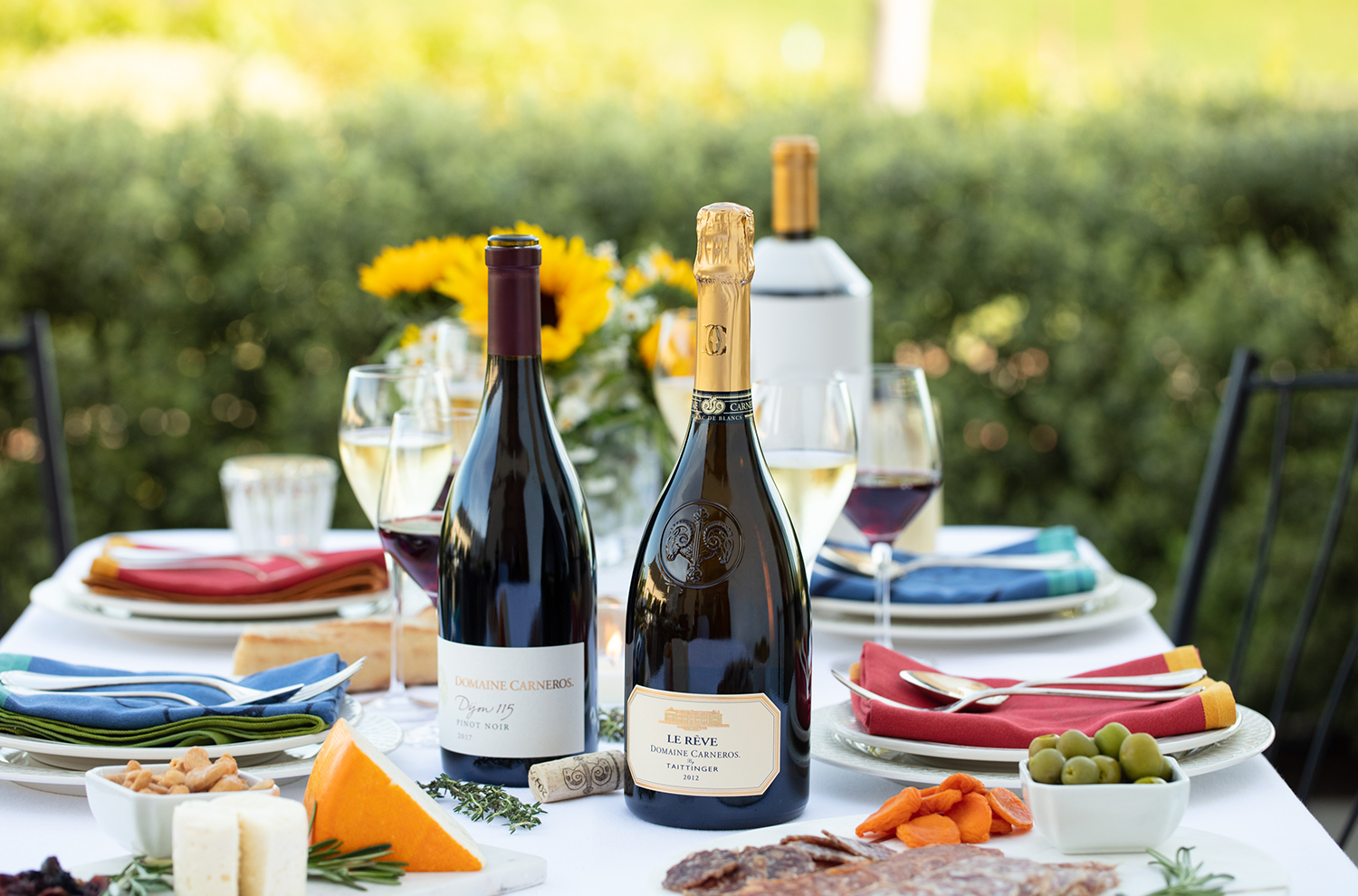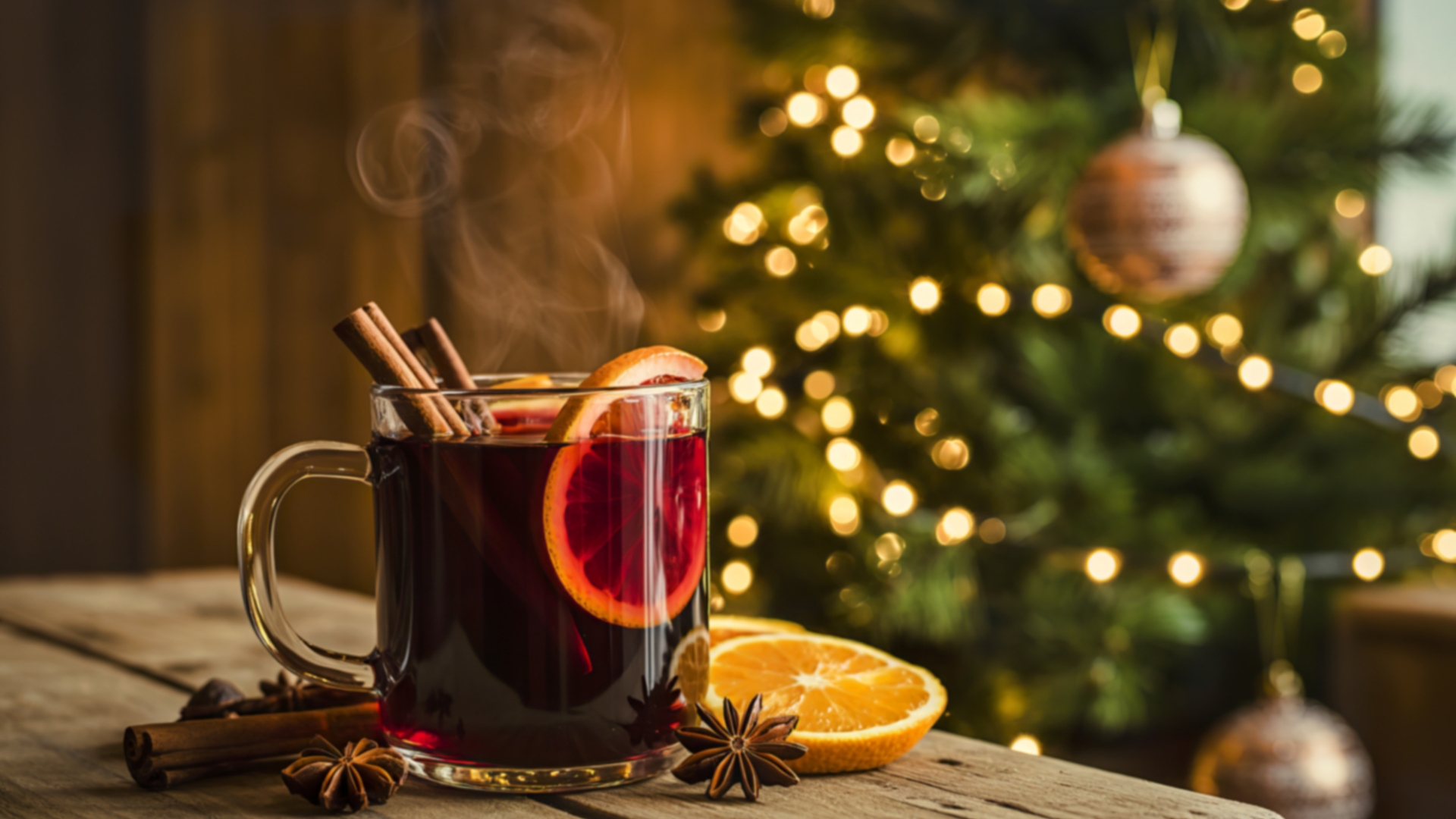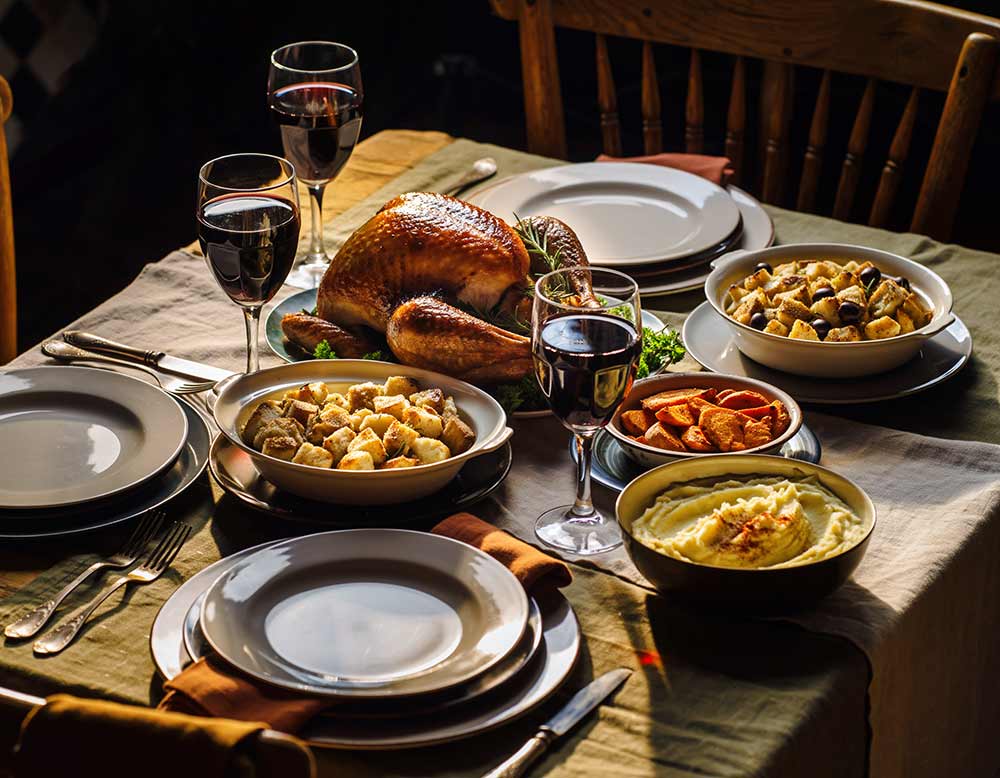It is expensive, seasonal, and has an exceptional, unique flavor. It’s an anticipated part of fall restaurant menus and has not fallen out of cooking fashion for centuries. We are talking about the most prized mushroom in the world: the truffle. And while we may not be professional truffle hunters, getting the dirt on the world’s most famous mushroom makes us appreciate it even more.
True truffles are a rare delight that offer a distinct, unique flavor unlike any other food or natural ingredient. There are several species of truffle, the most popular being White Truffle, Black Winter Truffle, Black Summer Truffle, Burgundy Truffle, and Bianchetto Truffle. The prices vary for different types of truffles depending on their rarity and flavor, with the highest (the white truffle) coming in at over $8,800 per pound. Though flavor intensity and complexity varies between truffles, each variety of truffle is firmly in the “umami” category of taste—very earthy and doesn’t need a lot of salt to trip your tastebuds.
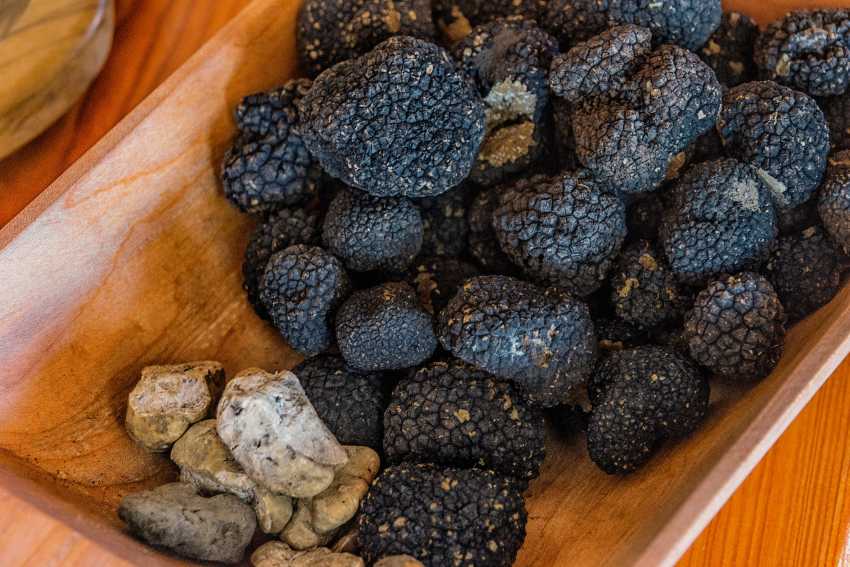
This exotic, expensive, and elusive mushroom belongs to the genus Tuber. Truffles grow underground and form a symbiotic relationship with the roots of specific trees—a famous example is with hazelnut trees in Piemonte, Italy, where the white truffle is found. Symbiotic relationships indicate that there is an exchange of nutrients.
Truffles are the most expensive mushrooms and one of the most exclusive ingredients in the world, which is why true connoisseurs call it the “diamond of the kitchen.” For centuries, every truffle hunter has had to rely on the keen sense of smell of trained pigs and dogs to locate truffles. However, dogs, who are known to be more obedient than pigs and have less of an affinity towards the taste of truffles, have overtaken the role. Female pigs in particular go crazy over the scent of truffle—great for locating them, but not so great when they’re dug up and eaten by the pig. Why is this? The musky aroma is similar to that of a potential mate’s pheromone, and is so strong and recognizable that even though buried deep inside the ground, the pigs still manage to find them.
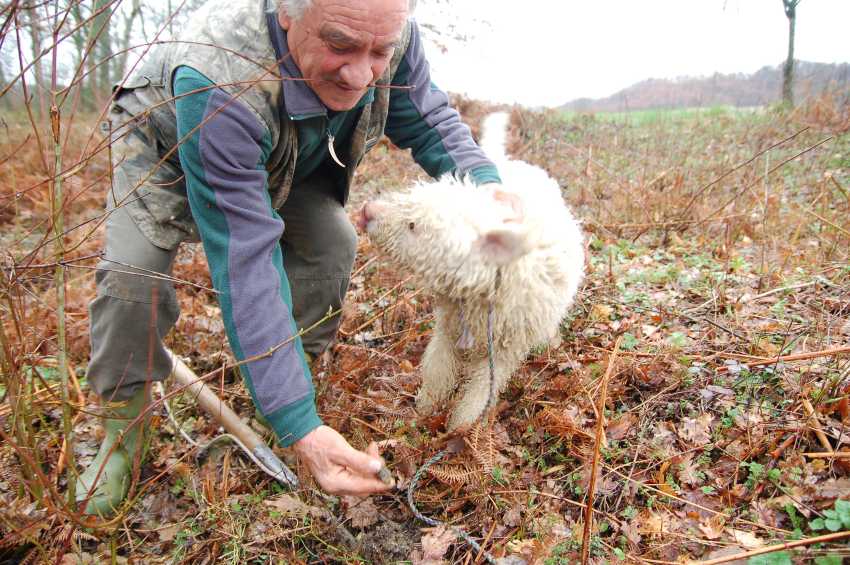
Interesting fact: using pigs to find truffles has been banned in Italy since 1985. Pigs’ hooves damage root systems, making it less likely the same host-tree will yield truffles another year. Another reason that dogs is a truffle hunter ‘s best friend!
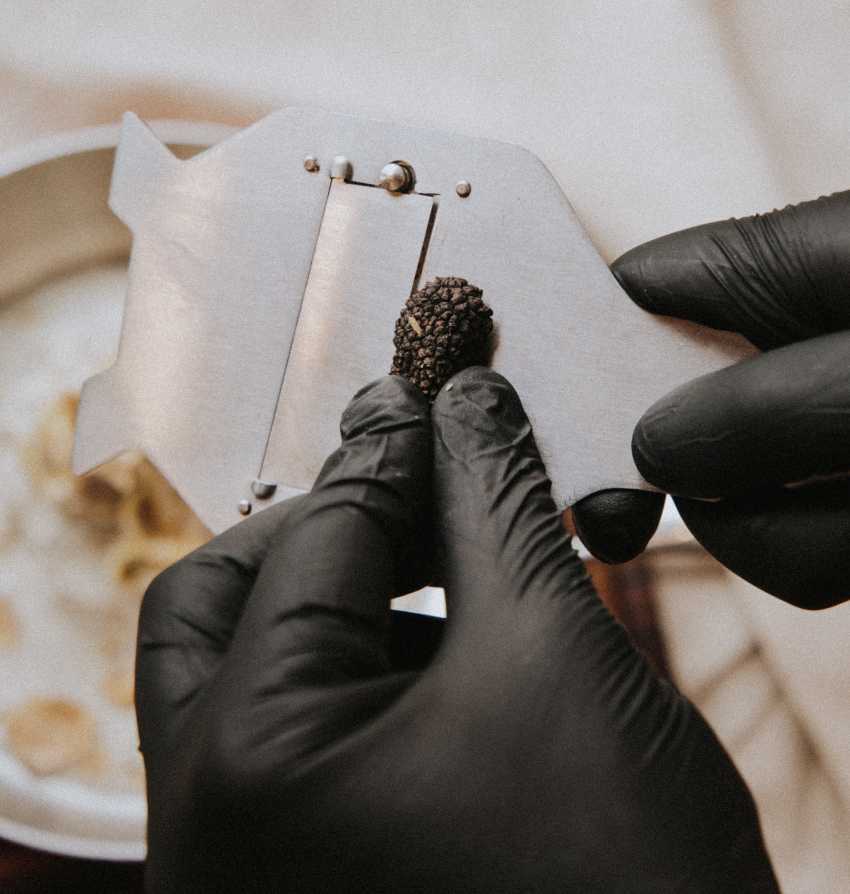
What makes truffles so expensive? Truffles are seasonal and extremely rare. As mentioned before, they grow in very specific conditions, which makes cultivation a difficult (some would say impossible) job. The truffle grows only where there the soil is suitable, where the temperature is just right, and the location has the exact characteristics favored by the truffle. Together with the fact that trained dogs must be used to find them, as truffles are otherwise hidden underground, and you’ll understand why they’re so rare.
Precious and pungent fresh truffles are usually served sparingly so as not to overpower dishes or drain customers’ bank accounts. Black truffles are sliced or peeled and can be used raw or lightly cooked, White truffles are carefully wiped clean and should never be cooked. They have a distinct peppery taste and are usually sliced raw, directly onto the dish.
What wines to pair with truffle?
With such a rare, special ingredient as the truffle, you’ll want your wine to elevate the experience, not overpower or undercut the flavor of the truffle. In general, wines that have grown in complexity with age will pair beautifully with the complex flavors of the mushroom.
White wines to pair with truffles
When truffle is shaved over egg-rich pasta or beef tartare, reach for the white wine. A Gavi made from Cortese grapes from Piemonte will have ageability and complexity, especially if aged on the lees like Michele Chiarlo Le Marne Gavi DOCG. The richness of a white Burgundy like Louis Jadot Puligny-Montrachet will only elevate the truffle, and the Domaine Ferret Pouilly-Fuissé with some age is perfect. Another excellent choice is a Riesling: choose one from Domaine Zind-Humbrecht from Alsace, such as the incredible Riesling Clos Windsbuhl Monopole, whose wines are finely made and can age for years, and you won’t be disappointed.
Red wines to pair with truffles
Opt for a red wine when truffle garnishes richer pastas and hearty meats. The most classic of wines to pair with truffles, particularly white truffle, come from the same territory as the mushroom: a Barolo or Barbaresco, such as the Michele Chiarlo Barolo Tortoniano or the Asili Barbaresco. For a dish that’s less complex (and for a meal that’s less expensive!) pair the black summer or winter truffles with soft Merlot like the Montes Alpha Merlot or an Alpha Pinot Noir, always an easy wine to pair with food: Cakebread Two Creeks Pinot Noir is a happy marriage of Old and New World, a Burgundian-style Pinot Noir from Anderson Valley, a premier cool-climate AVA.
Sparkling Wines to Pair with Truffles
Consider bubbles when the dish with truffle is accompanied by a fatty, buttery, or fried component. Sparkling wines that have aged long on the lees have greater creaminess and less sharp acidity, and therefore will be a gentler pairing with the delicate truffle. How could we not recommend a Champagne like Taittinger Prestige Brut, which ages for nearly four years on the lees? For an American option, Domaine Carneros Le Rêve Blanc de Blancs ages for five to six years sur lie, giving the wine a round, long finish.
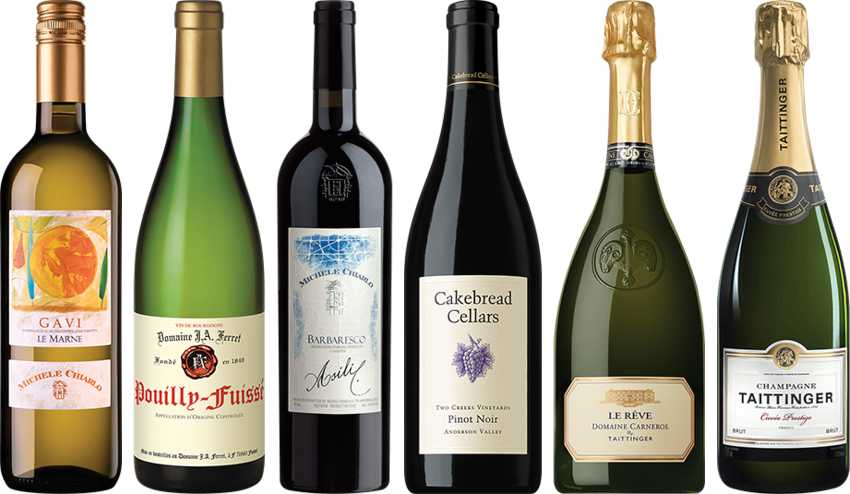
This article was written with the help of our good friends at Urbani Truffle, fine truffle purveyors for six generations. Click here to shop Urbani.
